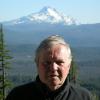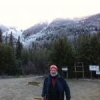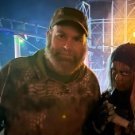I respectfully disagree with Patterson-Gimlin that the best Sasquatch tracks are from hard crust snow requiring massive weight. For example once Cliff Olson and I found several hundred tracks at or near the quarry on the east end of Whale Head above Ripplebrook Ranger Station. That happened about Thanksgiving week when we were looking for a Christmas tree. The snow, in places was 18" deep and fresh that night. The weight of the Sasquatch compressed the snow so we could see toes, dermal ridges, the "mid-tarsal" break, etc. We took lots of film photos but the light was rotten. It was perfectly obvious that the Sasquatch had walked to the edge of the quarry road and looked at the glow from Estacada and beyond in the night.
We went back up the next day only to find blown snow had covered the trackway.
In another instance, Steve Kiley and I found good, fresh snow tracks in snow up Indian Henry and there was no crust involved. We managed to cast three imprints, but they didn't come out too good but Ray Crowe put them in his "museum." Given these and other examples, I think the best tracks are in fresh, thick Cascade Mountain snow, or in impressionable soil. What it takes is time and gas money to find them.
I also found good snow tracks on Flat Top Mountain in the Oregon Coast range, among other finds. The quality of the snow and freshness are important.
Good trackways have parallel tracks. I suggest studying common animal tracks made in snow. Joe here



